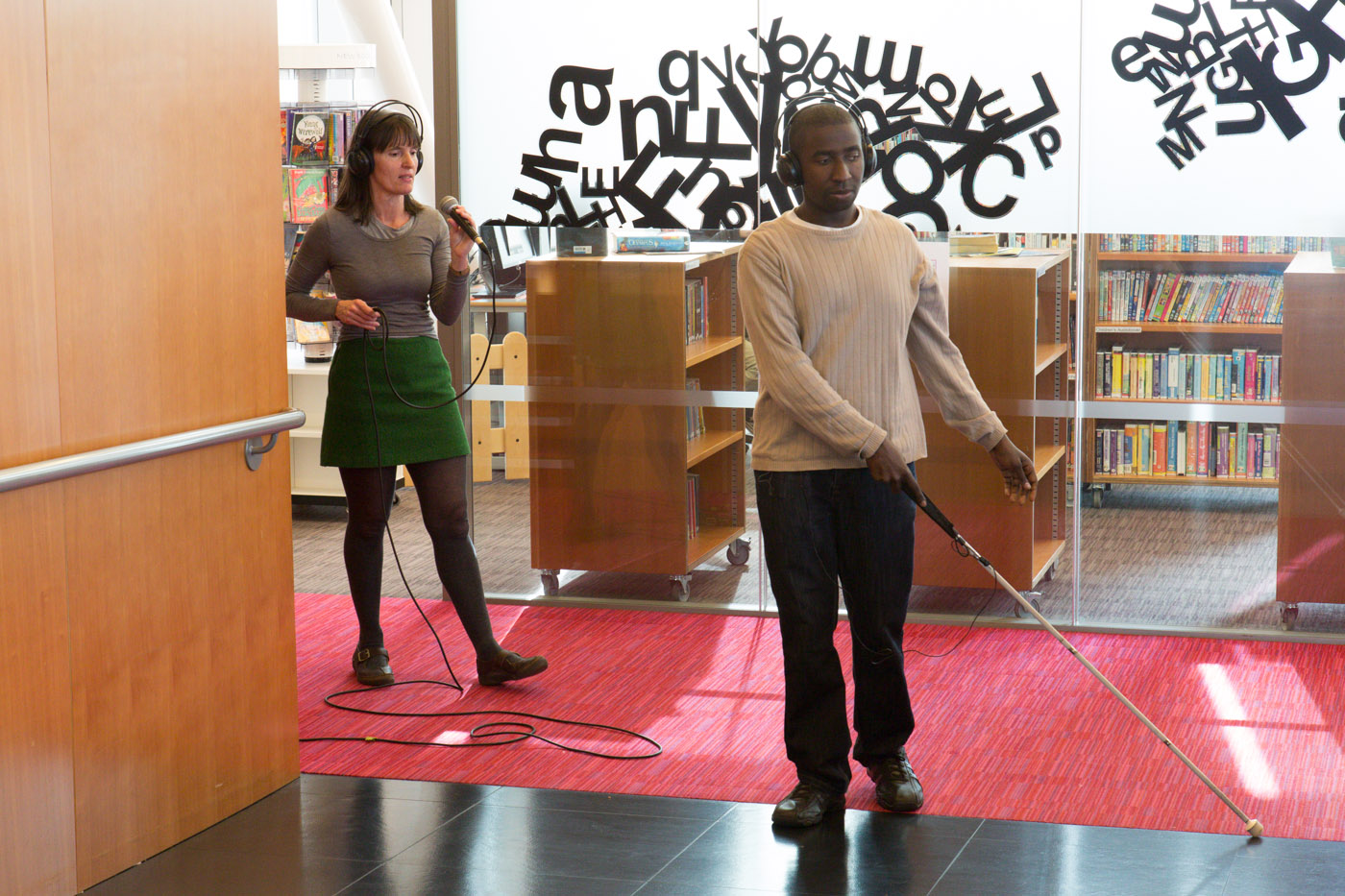On The Art Of Disappearing
The idea of disappearing has long since been a fascination for salamanda tandem. In the early days of ‘Eye Contact’ (a company of blind and sighted performers), Duncan, Lewis and I had witnessed how an experienced blind performer could be ‘rubbed out’ in a moment, by the presence of a less experienced but more confident sighted one. This troubled me deeply and in 1992, I gave a presentation to the board of East Midlands Arts in Loughborough, where I suggested that I’d found a solution: via ‘advocating vanishing’ from the finished work so that others could be more present; where eventually the mark of my success was the emergence of another person as artist and my own redundancy. Afterwards in conversation with Francois Matarrasso who was also speaking at the event, he disagreed with me and said that the artist had value and that we shouldn’t be thinking in terms of making ourselves redundant. I was young, and knew intuitively that he was right but couldn’t see how I could bring this together in tandem with my politics. I think this question still drives salamanda tandem.
The following Provocation was posted up for salamanda tandem on the EMPAF website by Kevin Hodgetts in June 2011 following a trip we made to Rotterdam to the International Community Arts Festival there. If you read to the end you will find a wonderful response from Julie Hood who without realising has answered so many of my long and soul searching questions
What is it about the role of the artist working in participatory settings that excites so much passionate debate and strong feeling?
As part of the recent EMPAF delegation at the International Community Arts Festival in Rotterdam I witnessed an arts event that sparked no little controversy and animated discussion. A composer by the name of Merlijn Twaalfhoven previewed a new piece of music called ‘The Air We Breathe’. The performance was billed as an interactive concert featuring professional singers, amateur choirs and audience participation. Sure enough, the composer, aided by a number of rehearsed vocalists and choirists ‘planted’ in the theatre crowd, led the rest of us through his score encouraging co-ordinated vocal contributions from the assembled ranks. The result was very impressive and left many with the feeling they had really been part of something bigger than themselves.
The question that dominated conversation afterwards was this: could such an event be classified and accepted as community art? As accomplished as it was, what right did the work have to claim a platform at a festival meant to be celebrating community art?
The problem for many delegates was around the role of the professional artist(s) who undoubtedly played a very visible and substantive part in the proceedings. Conversely, the public participation was seen as insubstantial and limited to the performance of pre-figured vocal parts. The role of the non-professionals in this process could be characterised as colouring-in a picture already drawn by someone higher up the artistic hierarchy. The event annoyed many delegates because it seemed to do nothing to dispel the idea that some of us are more expert than others. It reinforced notions of hierarchy, it reminded us that distinctions between performers (and the skills they bring) are inevitable. As a community art event it was seen by some as close to heresy.
I was reminded that the function of community arts is to reinforce a sense of togetherness and solidarity. To emphasis equality and unity over difference. So if the nature of the artist’s role in community settings shouldn’t be a determining one, what should it be? There is a body of opinion which believes the role of the community artist is to bring to the surface, and make visible, the talents and capacities ‘found’ in community settings. This is the community artist as benign archeologist, an explorer with a remit and duty to report back only that which is already present.
I am left wondering, is it possible to conceive of a role for the artist working in community settings that is less passive, less concerned about disappearing themselves from the production of work, or is this a betrayal of what community arts has always been about? And where does this anxiety of influence leave us as politically committed individuals wanting to make a difference through the work we do?
These are 2 interesting responses that came via the EMPAF web site from Julie Hood and Kevin Ryan
